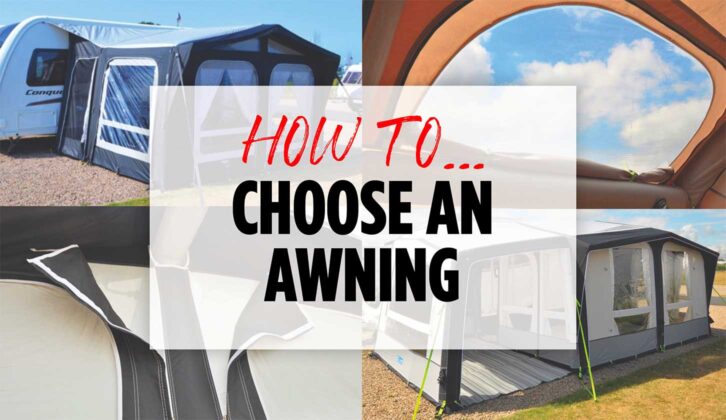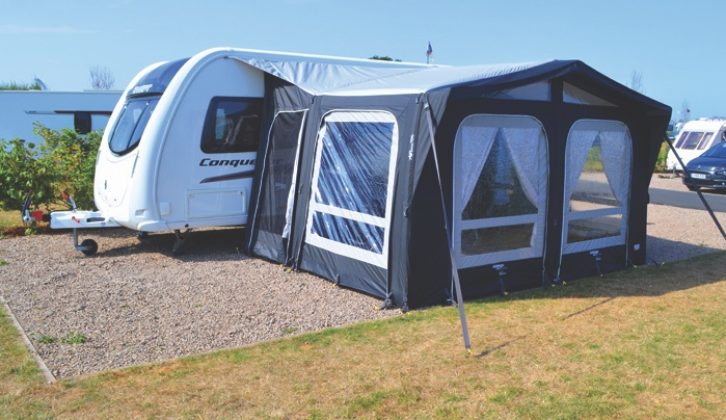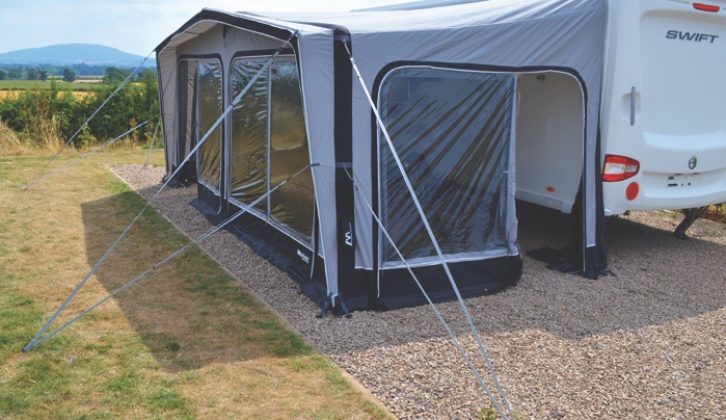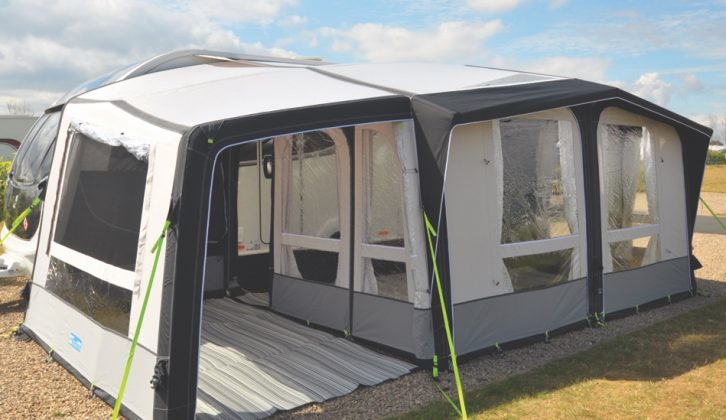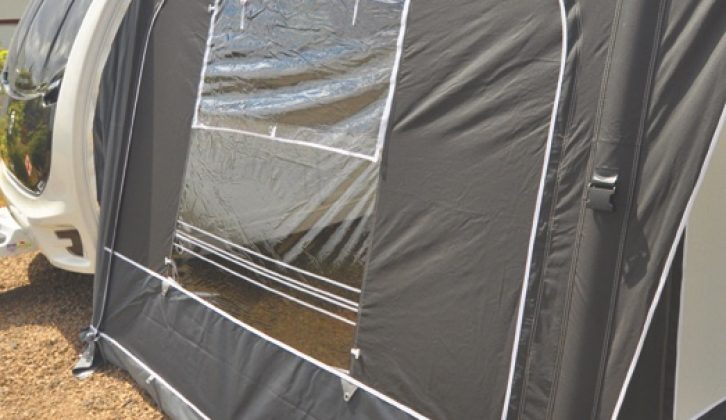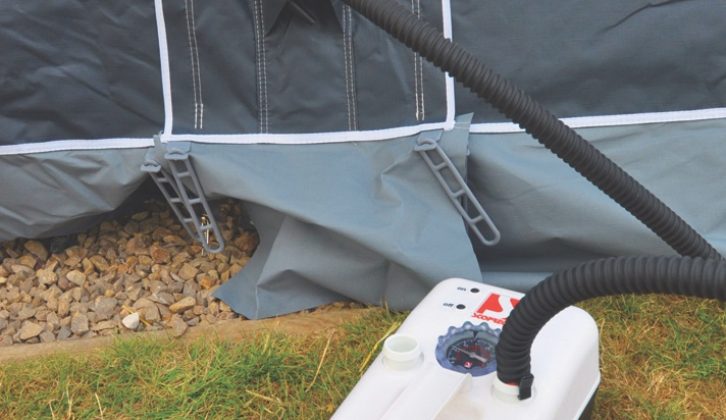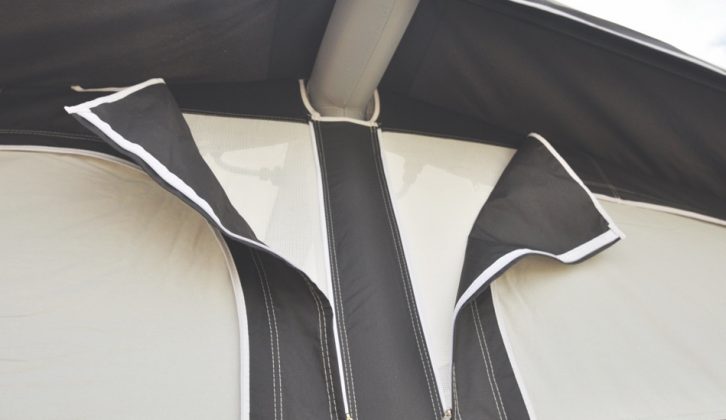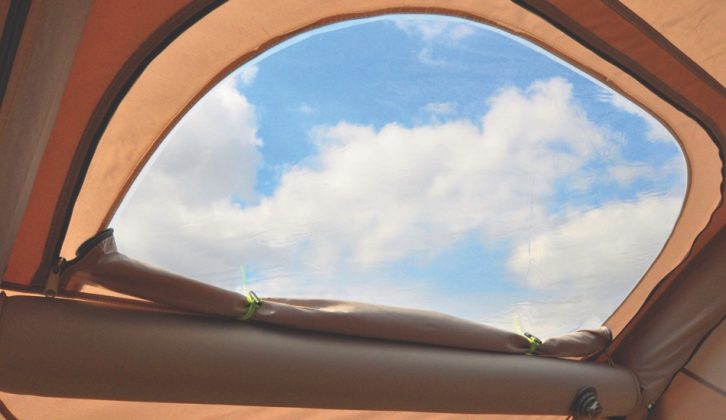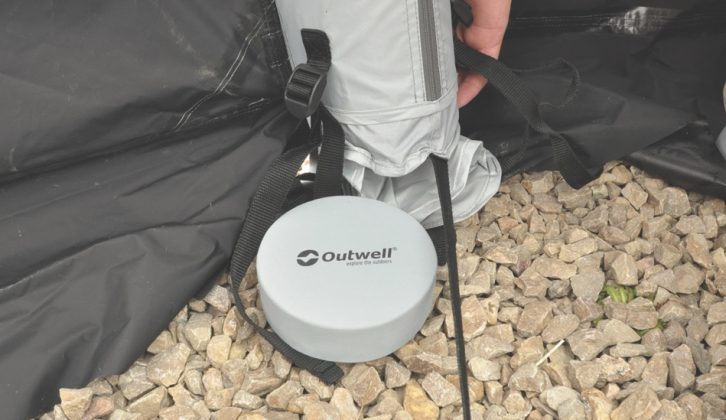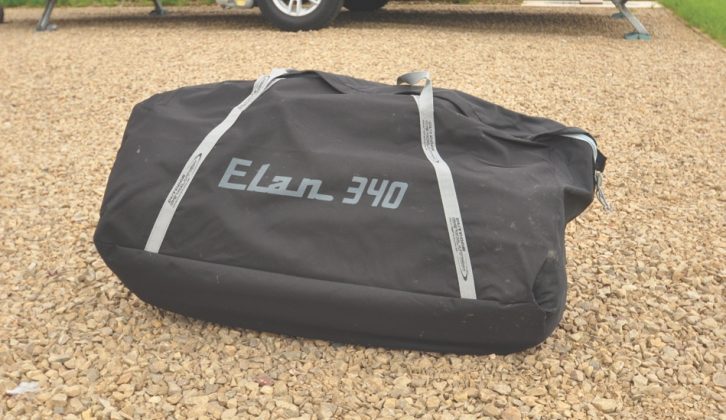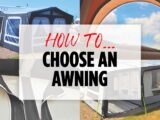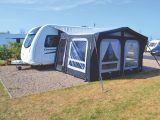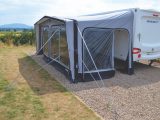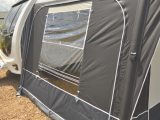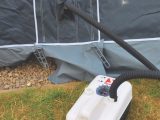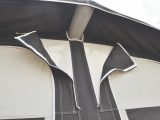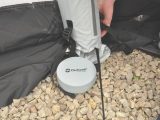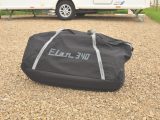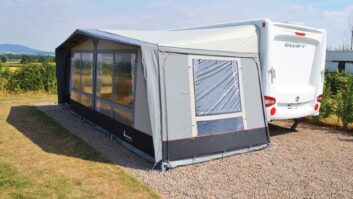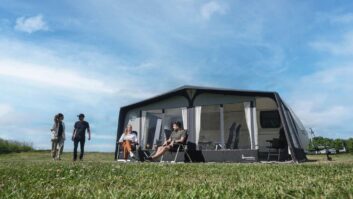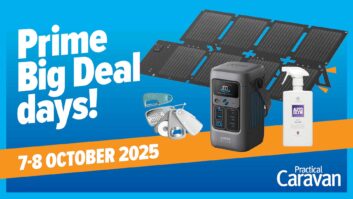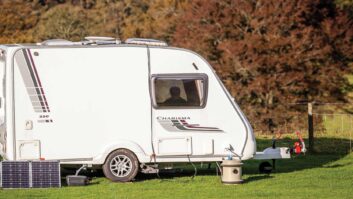Take a look around any campsite and you’re likely to see the majority of caravanners will have an awning pitched up next to their tourer. It’s not surprising when you think about it.
Today’s awnings are not just designed to be easier to set up, they’re packed with plenty of user-friendly features. After all, the best caravan awnings can make a real difference to any touring experience, not only giving you additional living and storage space but also providing a useful place for guests to sleep.
They’re also great value for money. Awnings are a brilliant addition to your touring lifestyle and for many, they’re a caravan essential.
So how do you choose a caravan awning that will be right for you? For instance, are you looking for something that will offer protection from the elements and some useful cover when you’re on a shorter getaway? Or are you more interested in getting some additional sleeping and living space when you’re away for longer trips?
In this guide, I’m going to talk you through the criteria to consider, including what you want from your awning and whether you’d be better with one of the best caravan air awnings or a more traditional pole option.
Thinking about buying a canopy instead? Then check out our best sun canopy for a caravan guide to see our top picks!
Choosing the type of caravan awning and size
It’s obvious, really, but knowing how to measure a caravan awning is critical, especially if you’re buying a full awning.
You can read elsewhere about sizing up (it’s not that difficult – manufacturers and specialist dealers can help if you don’t want to do the job yourself).
However, one early decision that you’ll definitely want to make is whether to go for a full or a porch awning.
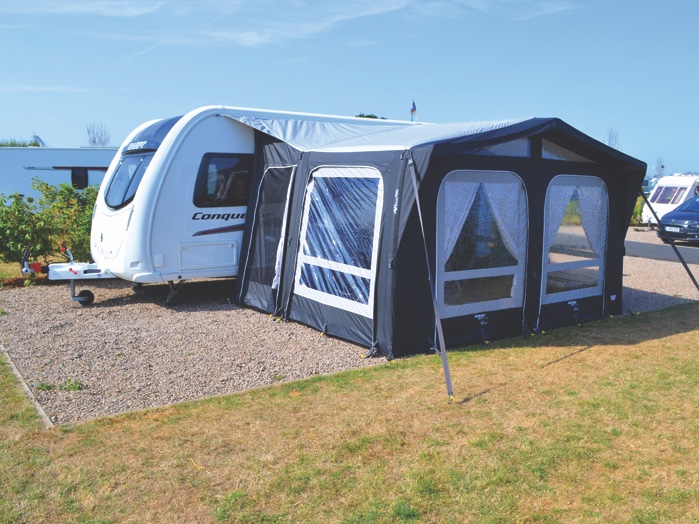
The former is best for longer-term seasonal caravan pitches and/or when you want a draught-free connection to your caravan. The latter will be easier to put up and take down, generally lighter, and can, if required, offer just as much space as the full version.
For a porch awning, you just need measurements for the height and a length that, ideally, won’t impinge on van doors, windows, external lockers and so on. There’s a choice of depths, too.
Awnings are made of a variety of materials, so it’s important to choose wisely, depending on your needs and budget.
This starts with cost-effective ripstop fabric, which is very light and great for weekends but not as UV-stable, so won’t have the same lifespan as some of the heavier-duty acrylics or coated polyesters.
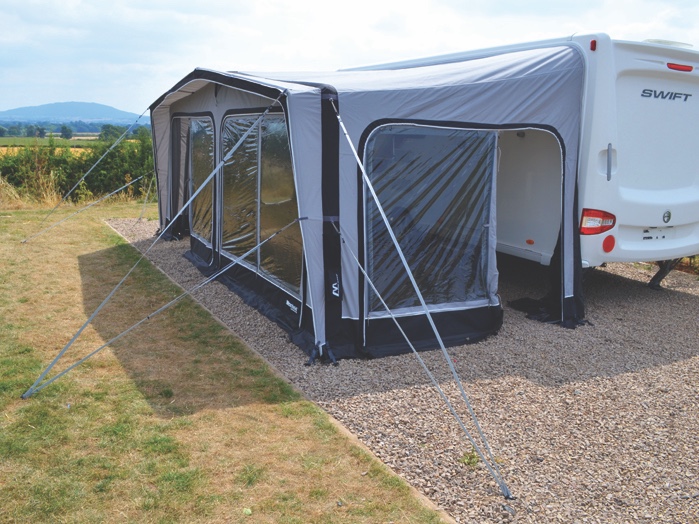
Basically, the higher up the fabric quality scale you go, the heftier the overall weight. Again, that could be something to consider in terms of your caravan’s payload – although you might find you prefer travelling with the packed awning stored in your car.
Pick your poles
This is simply a choice between traditional and inflatable. But it’s fair to say that there’s been a massive swing towards sales of inflatable porch awnings over the past few seasons.
You’ll see for yourself when you go to view the ranges at an awning specialist, such is the proliferation of this type. We’re also starting to see full awnings using inflatable technology.
If you prefer more traditional poles, there’s a choice: steel (strong but heavy), aluminium (not as strong, but noticeably lighter) or glass fibre/carbon (the best are very strong and very lightweight).
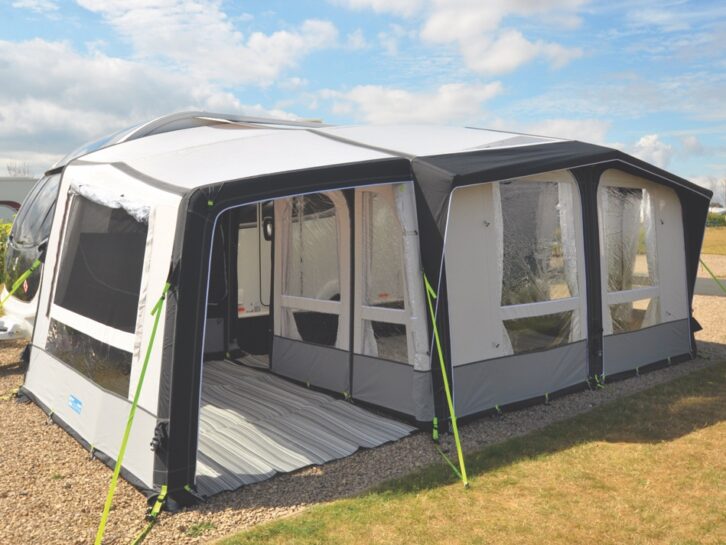
Some caravan awning manufacturers offer customers a choice of pole material for the same model of awning, as well as the option of having increased diameter poles, which provide greater strength and stability.
Why use traditional poles?
- Separate bags for poles and the awning itself can make packing easier.
- Easier to take down in terms of expelling unwanted air.
- Better suited to long-term use, such as seasonal pitching.
- Often cost less than their inflatable equivalents.
If you opt for a traditional model, don’t miss our guide to how to put up a full caravan awning.
Why use an inflatable?
- No chance of the poles accidentally causing damage, for example, to your caravan.
- Perceived as easier to put up.
- Contemporary designs and features.
- No worries about accidentally leaving the poles at home.
In practice, traditional poled awnings can be just as easy to put up as inflatables. You still have to thread them through your awning rail (often the trickiest part, but there are tips for making it easier) and peg them out.
Features to look for when choosing a caravan awning
- Doors and windows. It’s easy to argue you can’t have enough of these, for optimal flexibility, but do ensure you have good access as well as plenty of opportunities to see outside.
- Pole-free pitching, which is becoming more prevalent with inflatable units. Many use adjustable upright poles to maintain a tight fit to the caravan’s sides, but alternatives are increasingly on offer.
- Tinted windows are a real bonus – keeping out glare and heat as well as offering extra privacy – especially if weather conditions are particularly hot.
- Optional extras. You might want – or need – to buy some add-ons, such as groundsheets, carpets, footprints, extra poles (including verandah bars), storm kits, and lighting. Think about an annex, too, in case you’re going to need extra sleeping accommodation and storage. If you feel there’s any chance of the latter at some point in future, make sure you buy an awning that is compatible with such fittings.
- You don’t have to purchase everything all at once, but shop savvily and look out for ‘bundles’ – awning plus extras at special prices, which can offer great savings compared to buying individual items separately.
- Unlike the all-in-one nature of an inflatable, the weight of a traditional awning is split between the poles and the canvas, with separate bags for each. It makes them easier to carry as well as store.
- Ventilation is a critical factor, especially in inflatable units. Look for permanent vents, as well as those that can be closed off; although it’s best to have some permanent flow-through – it helps avert any build-up of condensation (often wrongly thought of as a sign of a leak).
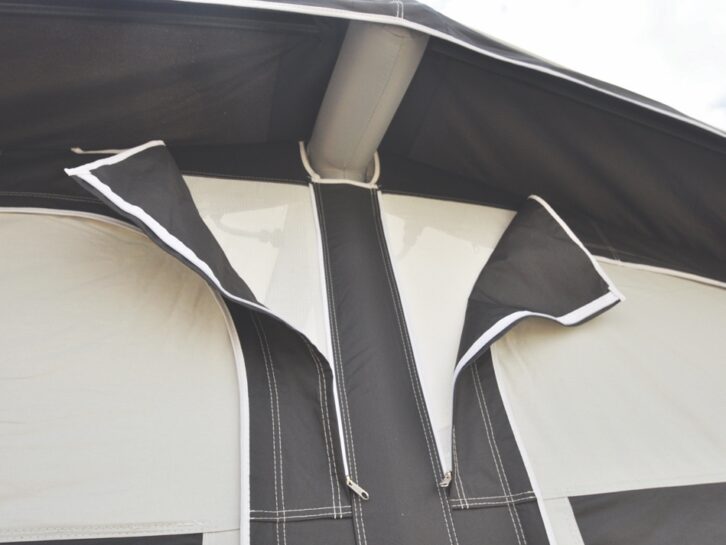
- Consider adding a roof lining, especially if you’re buying an inflatable. There’s a far higher chance of condensation build-up in this type of awning.
- Ask the retailer to throw in a set of rock pegs. These are the heaviest-duty pegs you can buy and might come in handy when you’re pitching on hard ground.
Buying secondhand
If you’re shopping on a budget, you could think about buying a used caravan awning instead. Caravan dealers will normally acquire pre-owned awnings when vans have been traded in, which will subsequently be available at an attractive price. When you’re buying a caravan (perhaps for the first time) from a retailer, there’s a chance you could be offered a pre-owned awning as part of the deal.
While the quality and condition can vary here, you could get lucky – this also presents you with a good chance of discovering what to expect from future awning purchases, something which is especially useful if it’s your first time having one.
It’s worth noting that the general guidance is to be wary when buying a secondhand awning, unless they’re a premium brand. As well as the usual warnings that come with purchasing anything pre-owned, make sure it’s the stated size and also that every frame part is still provided.
Keep your eyes peeled for signs of mould and if the fabric has had any recent waterproofing as well.
Also, a little tip – if you’re changing your caravan and believe this will mean you need a new awning, some full ones have the chance of being altered in size, meaning you won’t have to buy a new one.
Do your homework
- Be prepared to do plenty of research before you buy. You can get good advice from your local caravan dealership, and ask other caravanners, too.
- If you can, go and see the products on display at a specialist retailer or a show before you proceed with any purchase. Depending on the fabrics, you’ll find that there’s a different ambience inside each awning.
- As well as information on their websites, most of the larger brands have a YouTube channel, where you can find helpful tips and guidance.
- Ideally, try putting up your new purchase before going away with it for the first time. This will not only give you greater confidence when you begin setting up your awning ‘in the field’, butt should also ensure that nothing is missing.
And finally…
The addition of an awning can significantly enhance the whole family’s touring experience.
However, it’s very important to take the time to choose the caravan awning that is just right for you and then familiarise yourself with how it works, to avoid stress when you arrive on site (see: the best caravan sites if you want inspiration for your next tour).
Again, though, just because we say that a particular awning is very good, that doesn’t mean it’s necessarily right for you. It’s essential to do your research before you make your choice.
One final piece of advice: always check the bags will be big enough to accommodate the awning being repacked – it is going to be bigger and bulkier after being taken out. In fact, it’s a good idea to use a phone to video when you first unpack, so you will have a reference for how to put it away again.
If you’re looking for products to help you maintain your awning, don’t miss our pick of the best caravan awning cleaners, where we share our favourite options on the market.
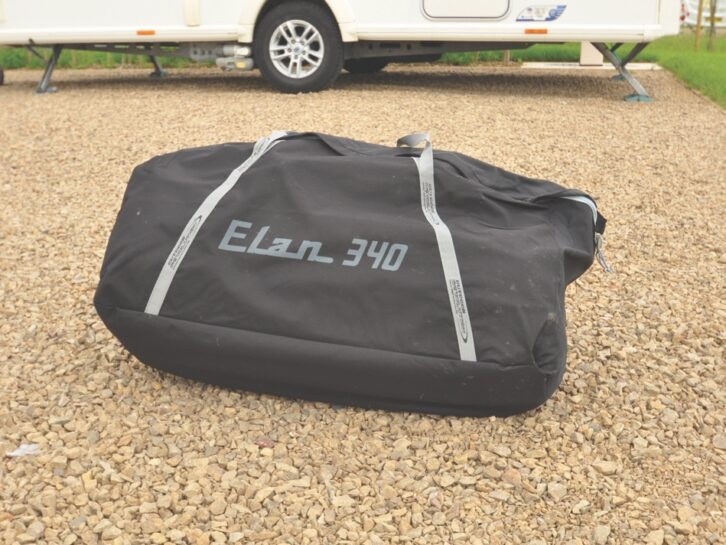
If you’ve enjoyed reading this article, why not get the latest news, reviews and features delivered direct to your door or inbox every month. Take advantage of our brilliant Practical Caravan magazine SUBSCRIBERS’ OFFER and SIGN UP TO OUR NEWSLETTER for regular weekly updates on all things caravan related
You need to establish some basic criteria, including what you want to use the awning for.
